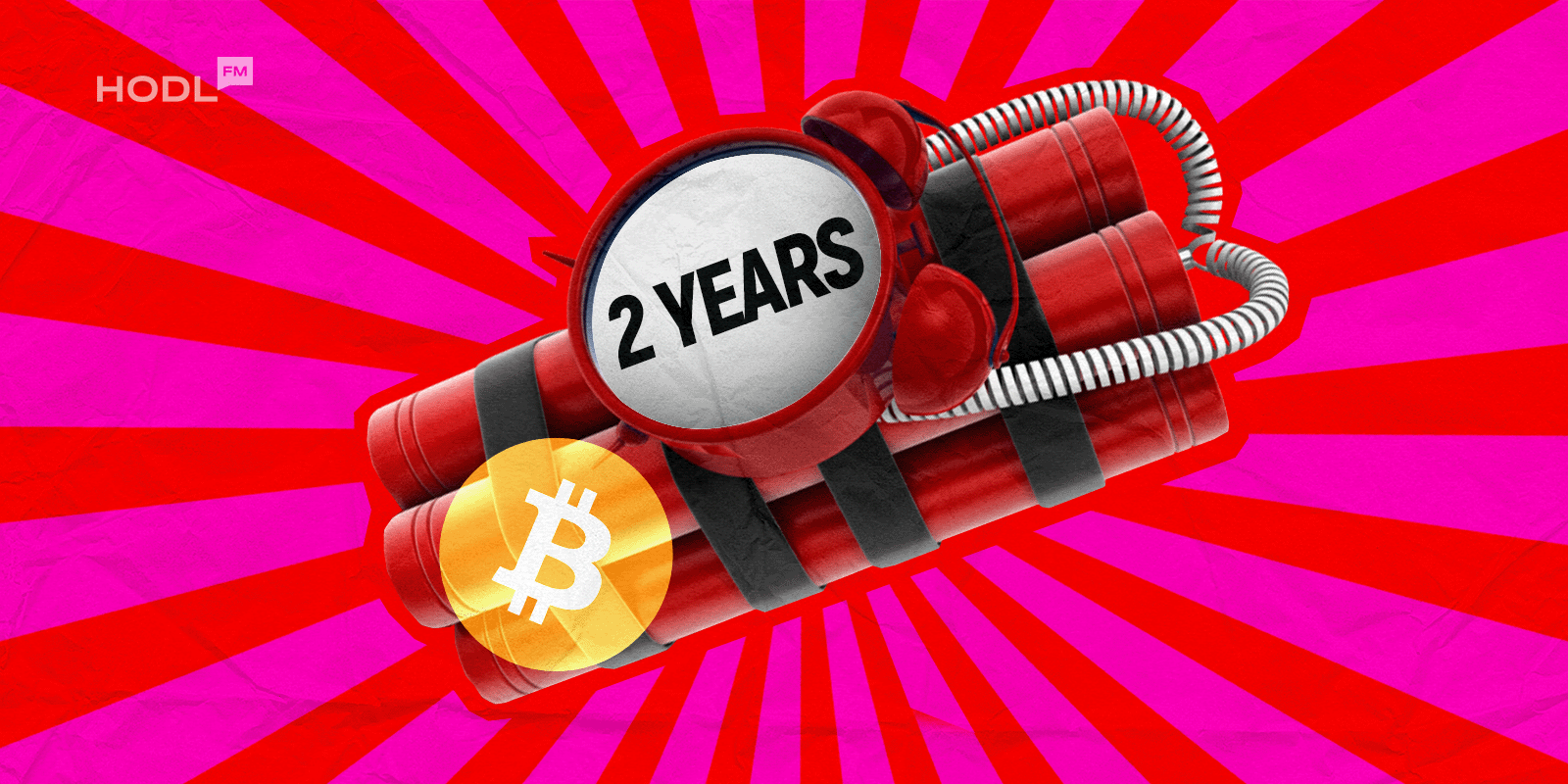The Bitcoin holding period is the time between buying BTC and selling it. In this article, we want to debunk what is the minimum holding period that guarantees returns when investing in Bitcoin.
The Concept of Holding Period in Bitcoin Investment
As per Microstrategy CEO Michael Saylor, you’ll only get guaranteed investment returns on Bitcoin if you HODL for four or more years. This concept is grounded on Bitcoin’s rate of appreciation and holding period instead of focusing more on the price you bought in.
Probably, it’s why the likes of Microstrategy haven’t shied away from buying BTC even at peak levels. Mainly because when a highly appreciating asset is held for a considerable amount of time, long-term appreciation will erase the stress of volatility and other cryptocurrency risks eating into your short-term holdings.
Someone on the Bitcoin subreddit pointed out that the four year halving cycle might be another reason for Saylor’s minimum BTC holding period. If supply is reduced by half and demand remains the same, automatically the price will appreciate after halving.
Michael Saylor: "The clear theoretical cut off, I think, is 4 years. If you want a safe, a really safe, cut off, look at the 4-year moving average of Bitcoin. If you have money that you can afford to put away and hold for more than 4 years, you would be foolish to store it in a currency."
by u/PodClips in Bitcoin
To find out whether these claims are true, we used Bitcoin price data between 2011 - 2024.
However, we will make some assumptions based on generalized conjecture: “Let’s say you hold BTC for period x, you are guaranteed to get a return above y.”
Saylor used period x = four years, and returns y = zero. Nonetheless, we still can actually determine what cap gives the worst return on BTC, and draw comparisons with other investments in the S&P500.
Analyzing the Worst Returns from Short-Term Bitcoin Hold
We will use the worst-case scenerio analysis, which means we’ll determine the worst return when you hold BTC over different time ranges. The figure we derive will bet the lower bound representing buying Bitcoin at the highest possible price and selling it at the most possible low price.
Examination of Bitcoin price data from 2011 to 2024
We considered several fixed 2-year holding periods:
- Buy BTC on 1/1/2011 , sell after 2 years.
- Buy on 1/2/2011, sell after 2 years.
- Buy on 1/3/2011 and sell 2 years later.
Each scenario generated a different return for each 2-year holding period. The lowest of those returns was our worst possible 2-year return.
By repeating these calculations using all possible holding periods i.e 2 , 2.1 , 2.2, 2.3 years, we can now plot a graph with the worst return as a function of the horizon as shown below.
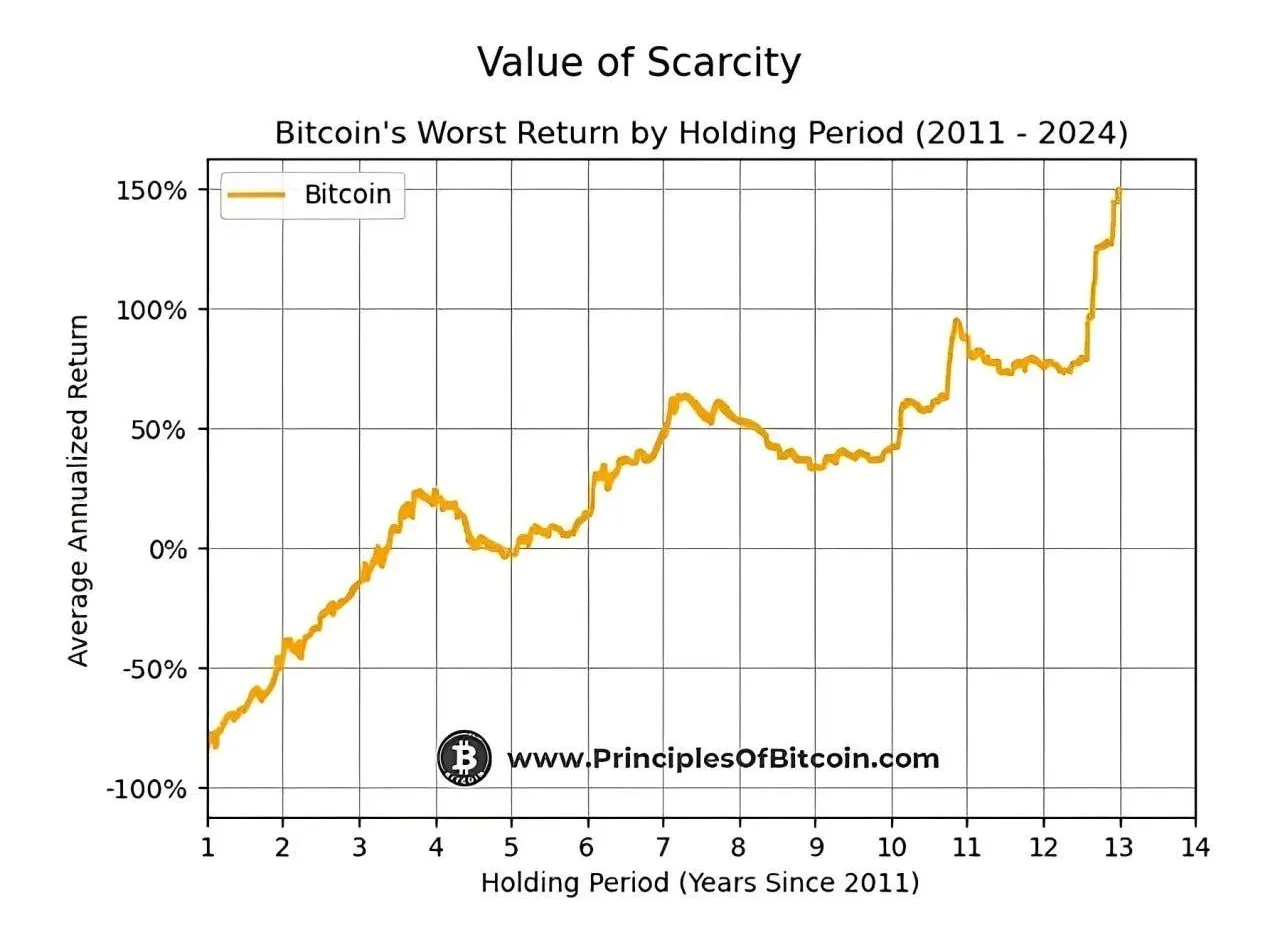
The Volatility and Returns of Bitcoin Compared to Other Assets
Below are some of the observations that are obvious when comparing returns on Bitcoin investments against other assets.
Bitcoin volatility over short holding periods often results in big losses, over 75% of the capital. As you’ll find out, almost everyone who hasn’t understood the holding period cut-off will throw shade on Bitcoin’s volatility, including the financial press.
If invested in Bitcoin for the short term, honestly, this is where the downsides of volatility are highly likely to eat into your investment capital.
The upside of volatility is likely to be experienced by those on the right half of the chart. This is why returns on holding are steadily increasing, reaching staggering 150%+ annually if held for the last 13 years between January 2011 and January 2024.
Also note that the chart does not increase steadily given that it has peaks and recessions. For example, the worst return on Bitcoin surpasses 0% after 3.25 years for the first time, and does this again after 4.5 years and again after 5 years.
As such, no investor lost money after 5.09 years by holding BTC since the worst return or lower bound indicates break-even.
However, at the end of 5.86 years, the returns on Bitcoin had at least equaled historical 8% return of the stock market. 6.08 years would have yielded Warren Buffet’s 22% returns while a little north of 10 years would have returned 50% per year, an amount greater than most investments.
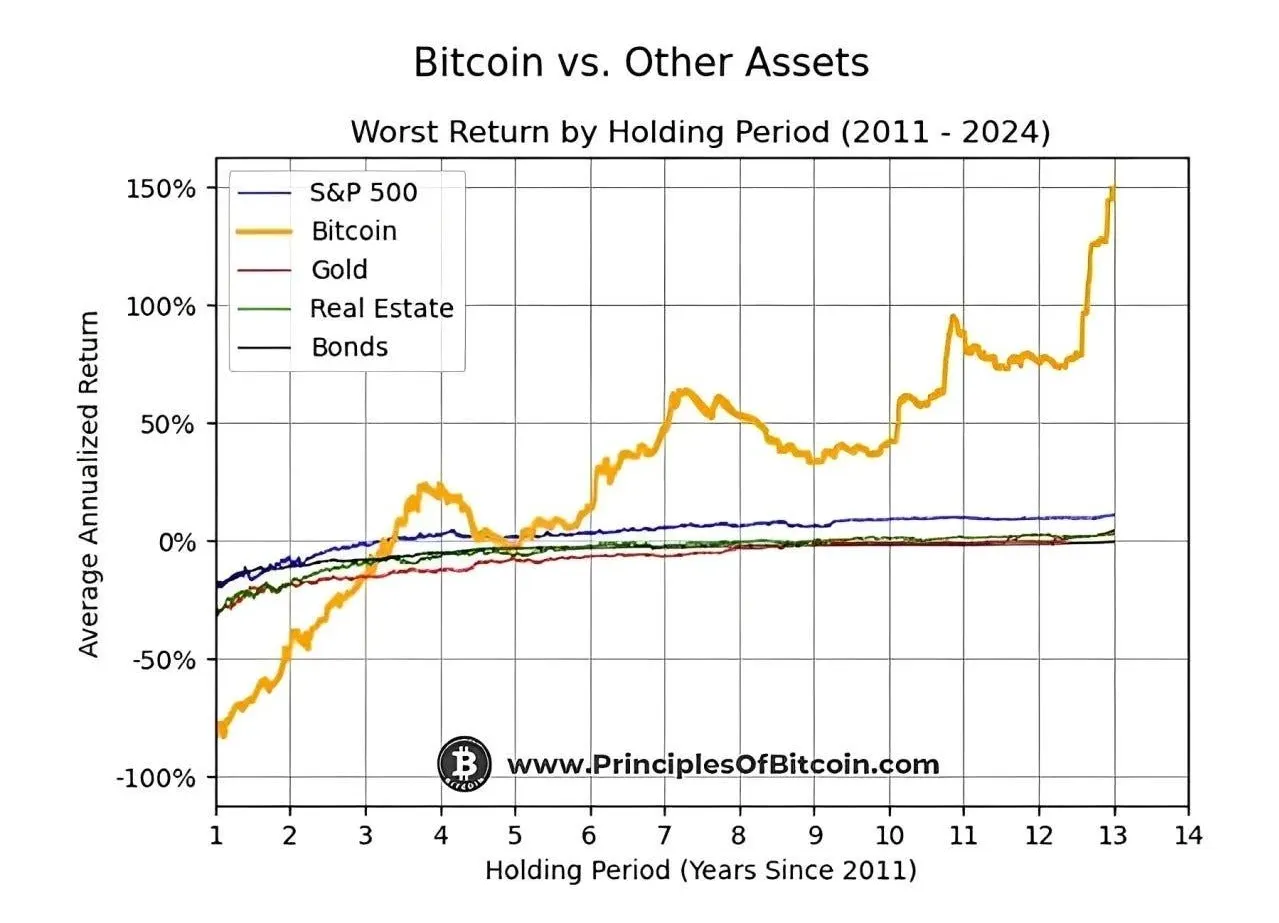
Bitcoin vs. Big Tech Stocks: A Comparative Analysis
If you draw a comparison with the market analysis data of a few popular tech stocks, the chart strikes some similarity with Bitcoin where there’s larger losses for short holding periods and larger gains for long holding periods.
Apple stocks will take 4.23 years to guarantee a 0% return and 6.83% to surpass 8% returns. For Tesla, investors will need atleast 5.71 years to break even and 6.21 years to generate the stock market’s historical 8% return.
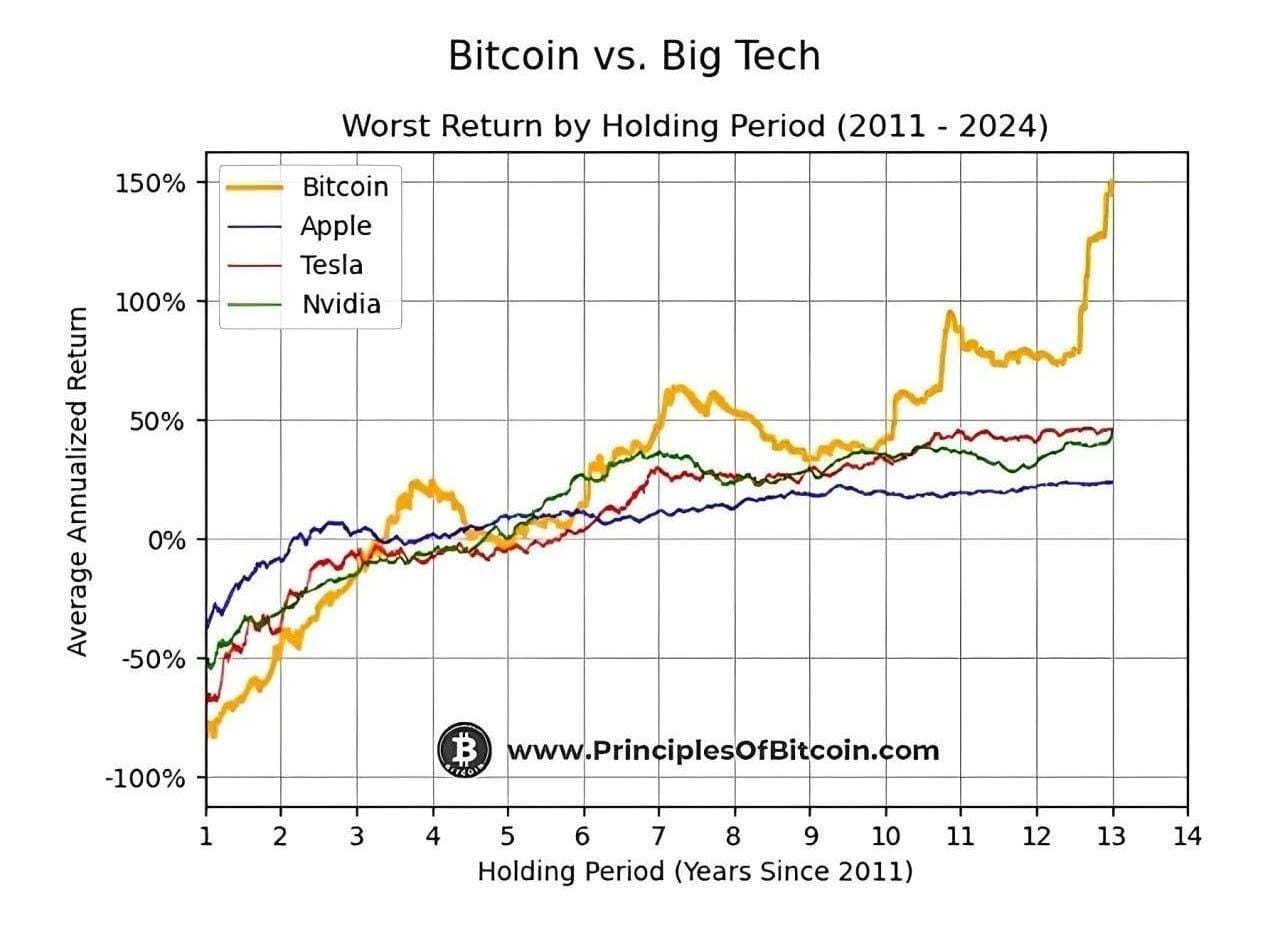
Worst-case returns of Bitcoin versus top tech stocks like Tesla, Apple, and Nvidia
When it comes to Bitcoin, even if you bought it at its most expensive and sold it at its cheapest, after 10 years, your worst return would still have been much better than the worst-performing stocks.
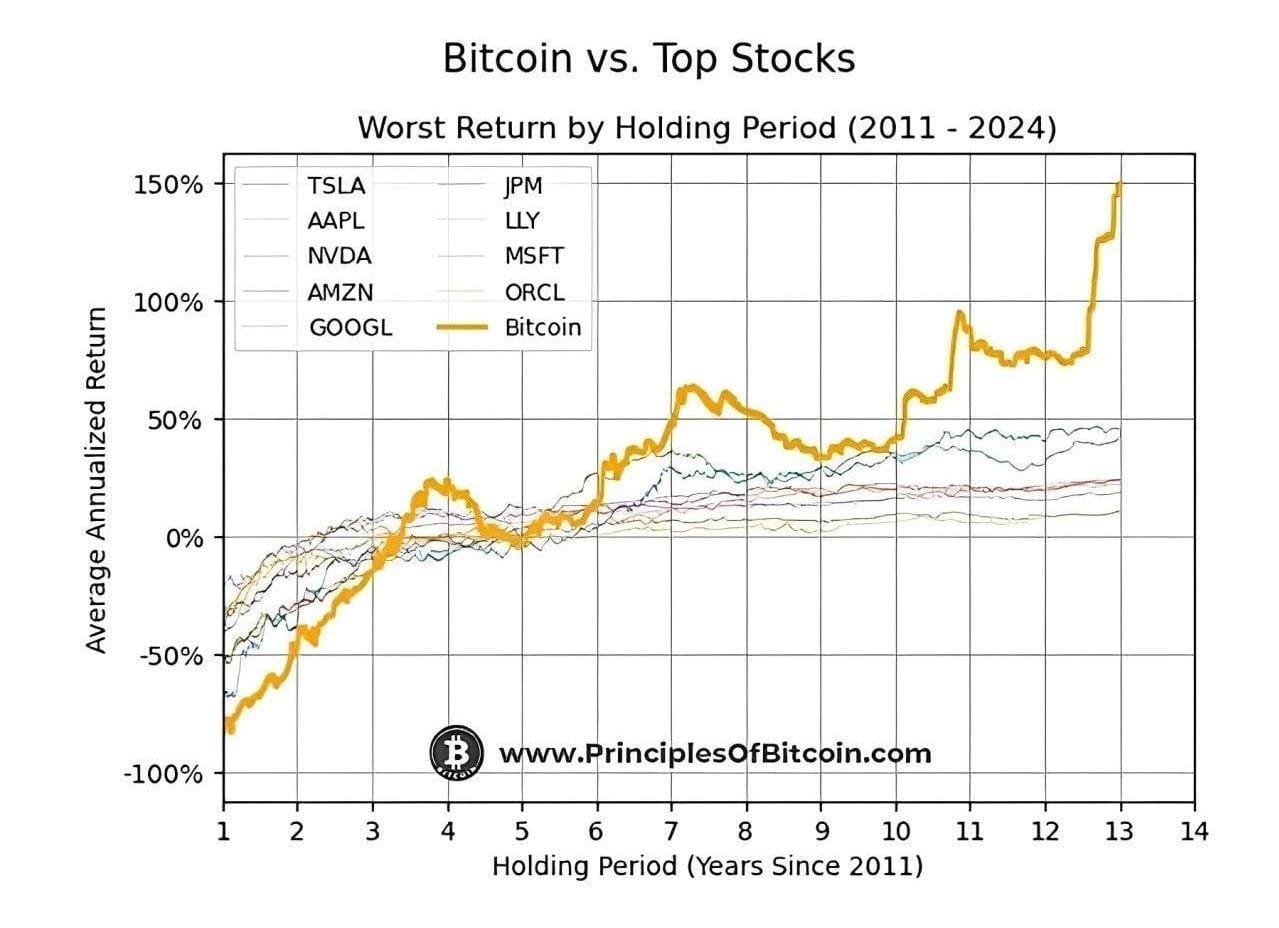
The Value of Scarcity in Bitcoin Investment
Bitcoin’s value appreciation over the years demonstrates the value of scarcity.
A fixed and predictable supply governs the value of Bitcoin. If an asset is scarce, its value will always go up whenever there is demand. Better yet, the fixed supply will drive demand up, which will stire new demand by attracting new buyers. This is why the price of Bitcoin keeps on increasing, and hence the volatility whenever someone sells.
The supply of other investments such as fiat, real estate and gold is not fixed. Hence, they may lack the same magnitude of returns as Bitcoin even when held for a substantial period.
Meanwhile, we’ve seen you need a long-term BTC investment strategy that extends no less than four years to get any guaranteed returns.
FAQs on Short-Term Bitcoin Holding and Investment Risks
What is considered short-term holding in Bitcoin investment?
Short-term holding typically refers to a period of less than four years, based on the advice of experts like Michael Saylor, who suggests a minimum holding period to avoid losses.
Why is short-term holding in Bitcoin risky?
Due to Bitcoin's high volatility, short-term investments can lead to significant losses, especially when buying at peak prices and selling during low periods.
How does the holding period affect Bitcoin investment returns?
Longer holding periods have historically shown to mitigate the risks associated with volatility, leading to potentially higher returns as the negative impact of price fluctuations is reduced.
Can you guarantee a profit by holding Bitcoin for a certain period?
While no investment can guarantee a profit, historical data suggests that holding Bitcoin for periods longer than five years significantly decreases the likelihood of a loss.
How does Bitcoin compare to traditional investments like the S&P 500?
Bitcoin exhibits higher volatility but also the potential for greater returns compared to traditional investments. Its worst-case scenario returns surpass those of the S&P 500 after certain holding periods.
What makes Bitcoin a unique investment compared to gold or real estate?
Bitcoin's fixed supply and increasing demand, driven by its scarcity, distinguish it from other assets that do not have a predictable supply.
What is the worst return from short-term Bitcoin holding?
The worst return observed was a 46% annual loss, occurring during a two-year holding period from December 2013 to December 2015.
How long should I hold Bitcoin to match the historical stock market return of 8%?
According to the analysis, holding Bitcoin for just over 5.86 years has historically returned at least 8%, matching the historical average of the stock market.
Is it possible to lose money by investing in Bitcoin?
Yes, especially with short-term investments during periods of high volatility. However, longer holding periods have historically reduced this risk.

Disclaimer: All materials on this site are for informational purposes only. None of the material should be interpreted as investment advice. Please note that despite the nature of much of the material created and hosted on this website, HODL FM is not a financial reference resource and the opinions of authors and other contributors are their own and should not be taken as financial advice. If you require advice of this sort, HODL FM strongly recommends contacting a qualified industry professional.
